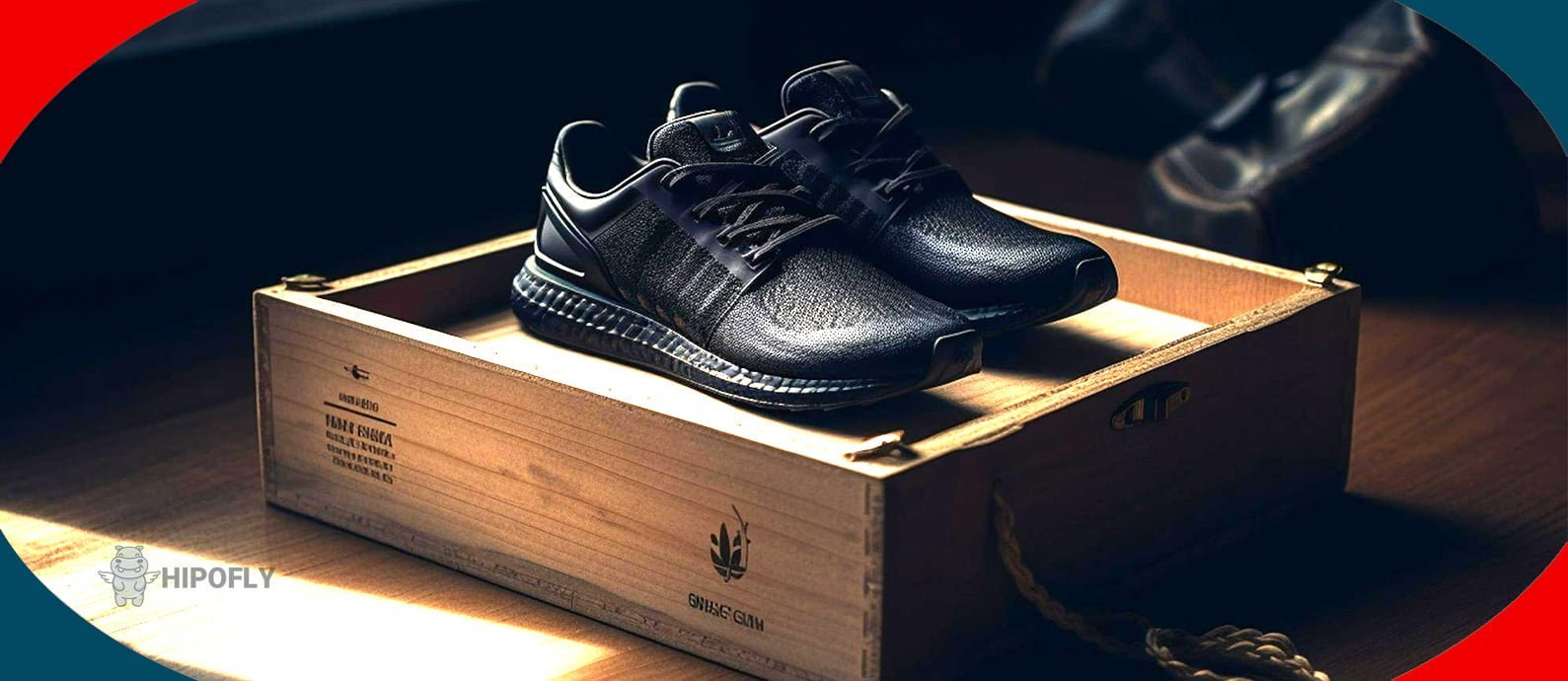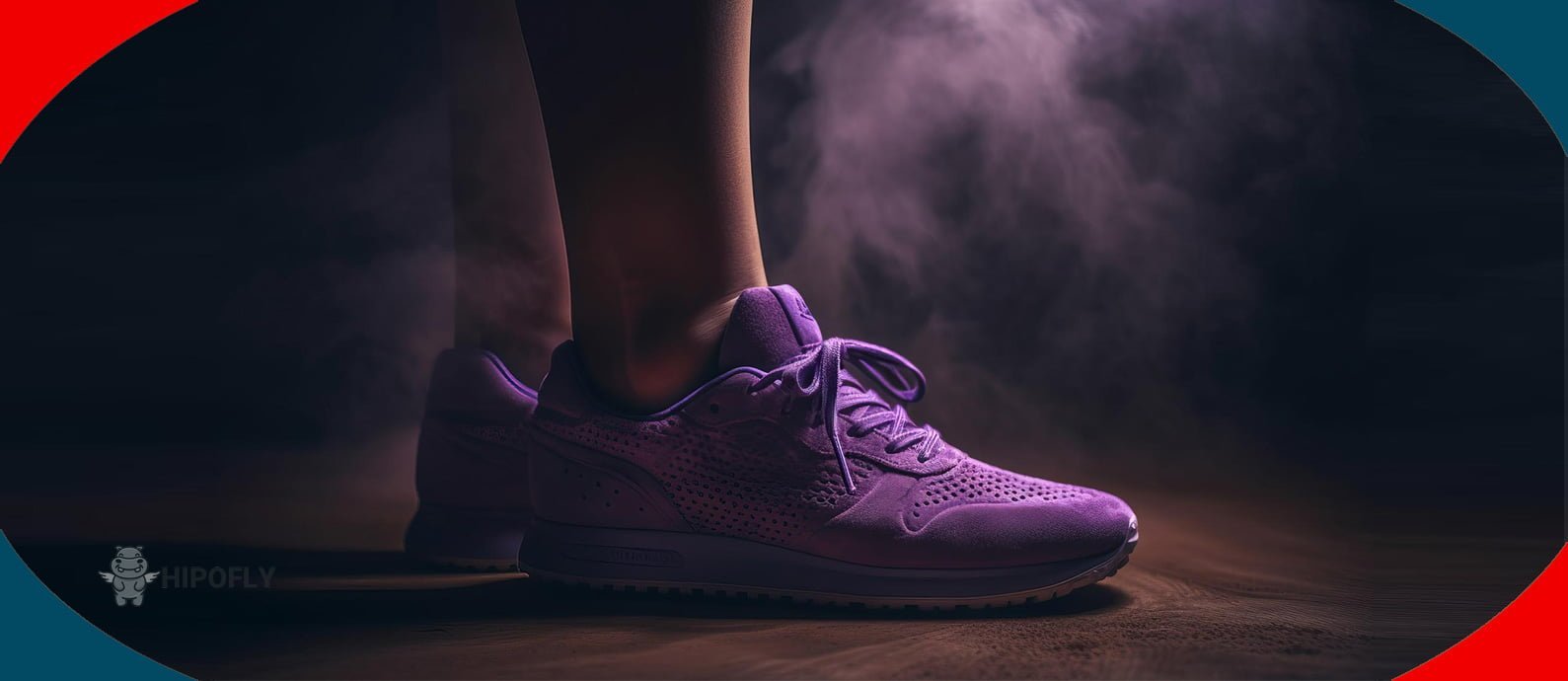Introduction
China has solidified its position as a global manufacturing and exporting powerhouse, and its impact on the footwear industry is no exception. The country’s unparalleled infrastructure, skilled workforce, and cost-effective production capabilities have made it a go-to destination for producing and shipping shoes worldwide. As one of the largest footwear manufacturers, China not only offers an extensive variety of shoes but also plays a pivotal role in the intricate logistics network that ensures these products reach markets across the globe.
Our expertise in international shipping, particularly in the context of “shipping shoes from China,” allows us to streamline the process for businesses and individuals alike. With a focus on cost-efficiency, reliability, and adherence to regulations, Hipofly ensures that your shoe shipments from China arrive promptly and intact, catering to the dynamic needs of the modern market. Trust Hipofly to be your partner in navigating the complexities of international shoe shipping, making your experience as smooth as the shoes we transport from China’s shores to destinations worldwide.

buy shoes from china | purchase guidance
Are you considering buying shoes from China but feeling unsure about the process? This guide is here to provide you with valuable insights and assistance in making informed decisions. As the global manufacturing hub for footwear, China offers a wide range of options for shoe enthusiasts and businesses alike. Let’s delve into the key aspects of purchasing shoes from China, addressing your concerns and helping you make a safe and informed choice.
Exploring Your Options
China’s extensive network of manufacturers and suppliers offers a diverse selection of shoes, ranging from casual and athletic to formal and specialized footwear. With the ability to find unique designs, competitive prices, and bulk purchase options, buying shoes from China can be an exciting opportunity for individuals and businesses alike.
Navigating Safety Concerns: Is It Safe to Buy Shoes from China?
Safety is a top priority when buying products from overseas, and the same applies to purchasing shoes from China. Many reputable manufacturers and suppliers in China prioritize quality and adhere to international standards. However, to ensure a safe buying experience, consider the following steps:
- Research and Due Diligence: Look for well-established manufacturers with a positive reputation. Check customer reviews and ratings to gauge the quality of products and services.
- Communication: Establish clear communication with the supplier. Ask questions about materials used, manufacturing processes, and quality control measures.
- Sample Orders: Request a sample pair of shoes before making bulk purchases. This allows you to assess the product’s quality, design, and comfort firsthand.
- Product Specifications: Clearly define your requirements regarding size, material, design, and any other factors that are important to you. This minimizes the risk of receiving products that don’t meet your expectations.
- Payment Methods: Use secure payment methods that offer buyer protection. This ensures that your financial information remains safe during the transaction.
- Shipping and Tracking: Choose reliable shipping options that provide tracking information. This allows you to monitor the progress of your shipment and receive updates about its delivery.
- Customs and Import Regulations: Familiarize yourself with the customs regulations and import requirements of your country. This will help prevent any unexpected delays or issues during the shipping process.
buying shoes from China can be a rewarding endeavor if approached with caution and careful research. By following these safety guidelines and collaborating with reputable suppliers, you can confidently source high-quality shoes that meet your preferences and standards. Remember, making informed choices is the key to a successful and secure shopping experience.
Exploring China’s Dynamic Shoe Market:
The Chinese shoe market is a thriving ecosystem characterized by innovation, production efficiency, and a wide range of options. Here’s a brief overview of some key aspects of the market:
Ideal Shoes for Shipping from China: Exploring the Market
When it comes to sourcing shoes from China for shipping, understanding the market and identifying ideal products are crucial steps. China’s shoe industry offers a wide array of options that cater to different tastes, styles, and preferences. Let’s delve into some popular types of shoes that are particularly suitable for shipping from China, along with an overview of the dynamic Chinese shoe market.
Popular Shoe Types for Shipping from China
- Athletic Footwear: China is known for producing high-quality athletic shoes that combine style and performance. These shoes often feature advanced cushioning, support, and innovative designs. They’re perfect for active individuals and sports enthusiasts.
- Casual Sneakers: China’s casual sneaker market boasts a variety of fashionable and comfortable options. From classic styles to trendy designs, these shoes cater to everyday wear and casual outings.
- Formal Shoes: China’s formal shoe market offers a range of elegant options suitable for business settings, formal events, and special occasions. These shoes often prioritize sophistication and craftsmanship.
- Children’s Shoes: The Chinese market excels in producing children’s footwear that balances style, comfort, and durability. With a focus on growth and development, these shoes are designed to cater to young feet.
- Fashionable Boots: From ankle boots to knee-high styles, China’s boot market is diverse and trendy. These shoes are crafted to keep up with fashion trends while providing functionality for various weather conditions.
Copying Shoes from China: Navigating Intellectual Property
It’s important to address a crucial topic when discussing China’s shoe market: intellectual property rights. While China offers a wide selection of shoe options, there have been concerns related to counterfeit products and intellectual property infringement. When sourcing shoes, it’s advisable to work with reputable suppliers who respect intellectual property rights and offer genuine products.
In conclusion, exploring China’s shoe market offers a wealth of options for sourcing ideal shoes to ship internationally. Whether you’re interested in athletic footwear, casual sneakers, formal shoes, children’s footwear, or fashionable boots, the Chinese market has something to offer. Remember to prioritize quality, research, and ethical sourcing practices as you navigate the exciting landscape of shoe shipping from China.
Can We Import Shoes From China?
Importing shoes from China is a common practice for individuals, businesses, and retailers looking to access a diverse range of footwear at competitive prices. China’s prominent role as a footwear manufacturing hub makes it a prime source for importing various types of shoes. Let’s delve into the details of importing shoes from China and the kinds of footwear you can consider for import, keeping the keyword “shipping shoes from China” in focus.
Importing Shoes from China: A Viable Option
importing shoes from China is a viable option for many reasons. China’s footwear industry benefits from efficient production processes, advanced manufacturing technologies, and a vast supplier network. This combination allows importers to access a wide variety of shoes at different price points, meeting diverse customer preferences.
Navigating the Import Process:
Importing shoes from China involves several key steps to ensure a smooth and successful process:
- Supplier Selection: Research and identify reputable suppliers who offer high-quality products and adhere to international standards.
- Product Specifications: Clearly define the type of shoes, sizes, materials, and any customization requirements you need.
- Quality Assurance: Request samples before placing bulk orders to assess the quality and design of the shoes.
- Logistics and Shipping: Choose reliable shipping options that provide tracking and insurance. Proper packaging is crucial to protect the shoes during transit.
- Customs and Regulations: Familiarize yourself with your country’s import regulations, taxes, and duties related to shoe imports.
- Ethical Sourcing: Prioritize working with suppliers who follow ethical manufacturing practices and respect intellectual property rights.
importing shoes from China offers a range of benefits, including access to diverse footwear options and competitive pricing. By conducting thorough research, collaborating with reputable suppliers, and adhering to proper import procedures, you can successfully navigate the process of importing shoes from China and provide your customers with high-quality footwear that meets their preferences and needs.
Shipping shoes from china to other countries
Shipping shoes from China to various countries involves a complex logistical process that requires careful planning, efficient transportation, and adherence to international regulations. As China remains a prominent footwear manufacturing hub, businesses and individuals often seek to ship shoes globally. Let’s delve into the intricacies of shipping shoes from China to different countries, along with a table highlighting shipping times and costs for select destinations
Here’s a simplified table showcasing estimated shipping times and costs for shipping shoes from China to selected countries using different shipping methods:
Shipping shoes from China to different countries involves several methods to choose from, each with its own advantages and considerations. The choice of shipping method depends on factors like speed, cost, volume of shoes, and the specific needs of the shipment. Here are some common methods for shipping shoes internationally:
Air Freight
- Advantages: Fast delivery, suitable for time-sensitive shipments.
- Considerations: Can be more expensive compared to other methods, especially for larger volumes.
Sea Freight (Ocean Freight)
- Advantages: Cost-effective for large volumes, suitable for less time-sensitive shipments.
- Considerations: Longer transit times compared to air freight.
Express Air Shipping
- Advantages: Fast and reliable delivery, door-to-door service, real-time tracking.
- Considerations: Generally higher cost compared to standard air or sea freight.
Rail Freight
- Advantages: Suitable for shipments within specific regions, can offer a balance between speed and cost.
- Considerations: Limited availability of routes compared to air and sea freight.
DDP (Delivered Duty Paid)
- Advantages: Hassle-free for the buyer; all costs and logistics are managed by the seller. Predictable costs.
- Considerations: Requires a deep understanding of customs regulations. Higher upfront costs for the seller.
When choosing a shipping method, consider the following factors
- Urgency: If time is critical, prioritize faster methods like air freight or express courier services.
- Volume: Larger volumes may benefit from sea freight for cost-effectiveness.
- Budget: Consider your budget constraints and balance them against delivery speed.
- Customs and Regulations: Different methods may have varying requirements for customs documentation and procedures.
- Destination: Certain methods might be more efficient for specific regions or countries.
It’s important to work with experienced logistics partners or shipping companies to navigate the complexities of international shipping and ensure that your shoes are transported efficiently and reliably to their destination.
Cost-Effective Methods for Shipping Shoes from China
When shipping shoes from China, selecting a cost-effective shipping method is a crucial consideration to manage expenses while delivering value to your customers. This involves finding the right balance between economical options and timely delivery. Let’s explore cost-effective shipping methods, delve into the customs process, and identify the best and most affordable approach, all while keeping the keyword “shipping shoes from China” in mind.
Cost-Effective Shipping Methods
- Sea Freight: Sea freight is often the most cost-effective choice for shipping shoes in bulk. While it involves longer transit times, it offers substantial savings for larger quantities. This method is ideal for restocking inventory or non-urgent shipments.
- Economy Air Shipping: Economy air shipping strikes a balance between cost and speed. While it’s more expensive than sea freight, it provides quicker delivery times. This option is suitable for mid-sized shipments that need to arrive within a reasonable timeframe.
Understanding the Customs Process
Customs clearance is a crucial step in international shipping that involves the inspection and approval of shipments by the destination country’s customs authorities. It ensures that imported goods meet legal requirements and are assessed for duties and taxes. Key points to consider include:
- Customs Documentation: Accurate and complete documentation, including invoices and packing lists, is essential for a smooth customs clearance process.
- Import Duties and Taxes: Different countries have varying duty rates and tax regulations. These charges can impact the overall cost of your shipment.
- Customs Declarations: Properly declaring the value and nature of your shoe shipment is crucial to prevent delays or potential fines.
- Restricted Items: Some countries have restrictions on certain materials or types of footwear. Ensuring compliance is vital to avoid clearance issues.
Best and Most Affordable Approach
The best and most affordable approach depends on your specific needs:
- Bulk Orders: For larger quantities and longer lead times, sea freight is the most budget-friendly option.
- Medium-Sized Shipments: Economy air shipping strikes a balance between cost and speed for mid-sized orders.
It’s important to note that while cost is a significant factor, customer satisfaction and timely delivery should not be compromised. Finding a balance between cost-effectiveness and meeting customer expectations is key to successful international shoe shipping.
selecting cost-effective shipping methods involves considering factors such as order size, delivery timeframes, and customer expectations. By understanding the customs process and partnering with experienced logistics providers, you can navigate the complexities of international shipping and offer quality shoes to your customers while optimizing your shipping costs.

Navigating Regulations for Importing and Shipping Shoes from China
importing and shipping shoes from China involves a set of regulations and processes that must be navigated effectively to ensure a smooth and compliant operation. Let’s delve into the key aspects of these regulations and provide an illustrative example.
Understanding Import and Shipping Regulations
- Customs Documentation: Accurate and complete documentation is crucial. This includes invoices, packing lists, certificates of origin, and any necessary permits or licenses.
- Customs Classification: Shoes need to be accurately classified based on their materials, design, and purpose. This classification determines applicable duties and taxes.
- Import Duties and Taxes: Different countries impose varying duties and taxes on imported shoes. These fees are calculated based on the declared value and classification.
- Quality and Safety Standards: Imported shoes must meet the quality and safety standards set by the destination country. Failure to comply can lead to delays or rejections.
- Intellectual Property Rights: Ensuring that the imported shoes do not infringe on any intellectual property rights, such as trademarks or copyrights, is essential.
Example:
Let’s consider a scenario where a small shoe boutique in the United States decides to import a shipment of leather shoes from a manufacturer in China. To navigate the regulations effectively, the boutique must:
- Ensure that all required documents, including invoices and certificates of origin, are accurate and complete.
- Properly classify the shoes based on their material, design, and purpose to determine the correct duty rate.
- Calculate and budget for the import duties and taxes that will apply to the shipment.
- Confirm that the imported shoes meet the quality and safety standards set by U.S. regulations.
- Verify that the shoes do not violate any intellectual property rights.
By adhering to these regulations and ensuring proper documentation, the boutique can smoothly import and ship the shoes from China, avoiding any potential legal or logistical challenges.
Understanding and navigating the regulations for importing and shipping shoes from China is crucial to ensure a successful and compliant process. By following the proper procedures and collaborating with customs experts if necessary, businesses can minimize risks and ensure the timely arrival of their imported footwear.
Conclusion
From the bustling manufacturing hubs of China to every corner of the globe, the voyage of shipping shoes weaves a narrative of meticulous planning and seamless execution. The ensemble of roles—importers, exporters, customs officials, and logistics partners—unites to perform an orchestrated symphony that propels these shoes across borders. Importers, with a repertoire of shipping methods such as sea freight, air freight, and express services, masterfully balance elements of cost, speed, and scale to harmonize with customer aspirations.
n the pursuit of cost-effective strategies, a spectrum of options presents itself. Sea freight stands tall as a budget-conscious choice for larger shipments, while economy air shipping strikes a delicate equilibrium between affordability and timeliness. Adapting the approach to the cadence of each endeavor is paramount, ensuring customers savor value and businesses thrive.
At Hipofly Shipping Company, we recognize that beyond shoes, each shipment carries a story—a tale of craftsmanship, commitment, and connection. As we bring this guide to a close, we extend our hand as your dedicated partner in the symphony of international shoe shipping. With expertise honed through experience, we pledge to orchestrate your shipments with precision, care, and reliability. From navigating customs intricacies to ensuring prompt deliveries, we are more than a shipping company. We are your conduit to global success. Trust in Hipofly Shipping Company to ensure your journey continues, seamlessly crossing borders and delivering excellence every step of the way.
Choosing the right shipping method involves balancing factors like delivery speed, cost, and order volume. Options include sea freight for budget-friendly bulk shipments and express shipping for quicker deliveries.
Customs classification assigns a specific code to your shoes, determining the appropriate duties and taxes based on their characteristics. Accurate classification ensures you pay the correct fees.
DDP (Delivered Duty Paid) means the seller handles all costs and logistics, while DDU (Delivered Duty Unpaid) requires the buyer to handle customs clearance and duties upon arrival.
Customs authorities play a pivotal role in regulating the import process. They inspect shipments, assess duties and taxes, and ensure compliance with local regulations to facilitate smooth cross-border movement of shoes.
Customs brokers are experts in customs regulations. They assist in completing accurate documentation, navigating complex procedures, and ensuring that your shoe imports comply with customs rules, expediting the clearance process.
Yes, different countries have regulations and restrictions on importing certain shoe types or materials. It's important to research and understand your destination country's import policies to ensure compliance.
Express shipping guarantees swift delivery, making it ideal for time-sensitive orders or products. It ensures that your shoes reach your customers promptly, even if it comes at a higher shipping cost.
Hipofly Shipping Company serves as your partner, offering guidance on the best shipping methods, managing essential documentation, and ensuring that customs compliance is met, making your shoe imports hassle-free.
Quality control inspectors meticulously examine shoes to ensure they meet safety and regulatory standards. This reduces the risk of defects and ensures that the shoes you import are of high quality.
Yes, most shipping methods, particularly express options, provide robust tracking features. This allows you to monitor the progress of your shoe shipment from China to your destination in real-time, ensuring peace of mind.


